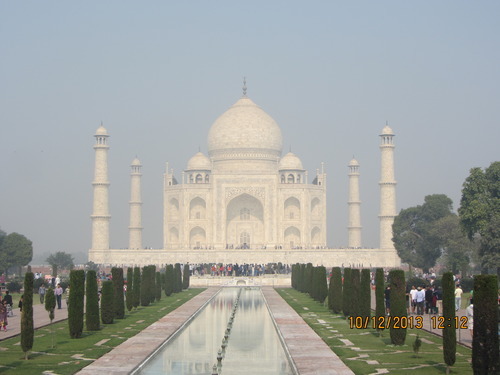Continuing from Part 2........ And Part 3............
Meherangarh Fort
After lunch, we headed for the main attraction of Jodhpur, The Meherangarh Fort.
Meherangarh Fort
After lunch, we headed for the main attraction of Jodhpur, The Meherangarh Fort.

Unlike the Jaisalmer Fort, this fort is privately owned by the King, and has no residents. In the eighties, the present king started renovating the fort and has opened parts of it to the public. It is a beautiful fort and has been done up very well. In Jodhpur, all sites have an official Royal family approved, guide with standard rates. The guide takes you around, tells the story and walks you through the various exhibits placed in the rooms.





The route has been so planned that after the tour, you land up at a handicraft shop located within the premises followed by an eatery.



It was dark by the time we finished. The fort looked beautiful as it was lit at night.
This fort is the venue for various cultural activities. There was a Rajasthani musical evening that day. But the cheapest ticket was Rs.2000. ***Please refer to RANT***. These activities are meant for popularising the folk arts. But in reality are a elitist get-togethers. As we walked out of the fort, we saw the large number of guests of the King, mostly foreigners, arriving in fancy cars. There was sufficient security to ensure that the riff-raff general public doesn’t get anywhere close. In fact we saw an altercation between these guards and a journalist, probably drunk, who denounced these activities which were meant only for the rich and famous.

Once we were out, the autos, as usual, demanded an exorbitant amount. ***Refer RANT again***. Since it was night and the weather was pleasant, we walked down to town and took an auto back from there.
Jodhpur has very limited number of sites to visit. In fact, one day is enough to see all the tourist places. The only place left for us to see was Jaswant Thada, which is very close to the fort. However, we could not see it the previous day as it was too late.
The next morning, we did some running around for our train tickets, which were still wait listed. In a nutshell, seven of us boarded the train at Delhi with two confirmed tickets (Me and Yuvraj sat in the unreserved coach and finally managed a reservation by midnight). For our return leg, which was tonight, we didnt have a single confirmed reservation. But that is a story for another day.
Jaswant Thada
After lunch we went and saw Jaswant Thada. This is a marble memorial (apparently they are called Cenotaphs in proper english), built in 1899, by the King Jaswant Singh II, for himself.

As the story goes (acoording to the guide. Not corroborated), he was not a very popular king. As is generally the case, as he got older, he started getting philosophical and having worrying thoughts about how people would remember him after his death. So, one day, he decked himself up in all his jewelry, and faked death (It seems he could hold his breathe for a reeeaally long time and go into a trance, according to the guide). His favourite queens, on seeing him dead, instead of mourning his passing, started dividing up his jewellery between them. He finally woke up when one of them was about to chop off his finger for the ring (How he knew it was about to be chopped when in a trance is anybody’s guess). The guide did not know about the fate of the queens, but the King turned over a new leaf and went on to become a very good king who executed various projects for the general good.


The Jaswant Thada is a beautiful, but whimsical, structure. It has a small inner sanctum dedicated to the king. As is generally the norm in India, we have found a marble Jaali nearby to tie threads on as it is believed that the king will fullfill your wishes.

The entire area is the royal cremation ground and is full of smaller Chattris and tombs of other kings.

It also provides a great spot for taking pictures with the Meherangarh Fort as a backdrop.

Overall, the tourist experience in Jodhpur, ***despite my RANTS***, is much nicer. It is more organised and the king has streamlined the experience as he owns all the major tourist attractions. Unlike Jaisalmer, Jodhpur is a much more compact city with all places to visit within easy reach. As a result, the autos can be both a convenience as well as a nuisance.

That night, we took the train back to Delhi (and yes, we had confirmed reservation for four) and were back home by 0700 on monday…. ready for another day at the office.
























































